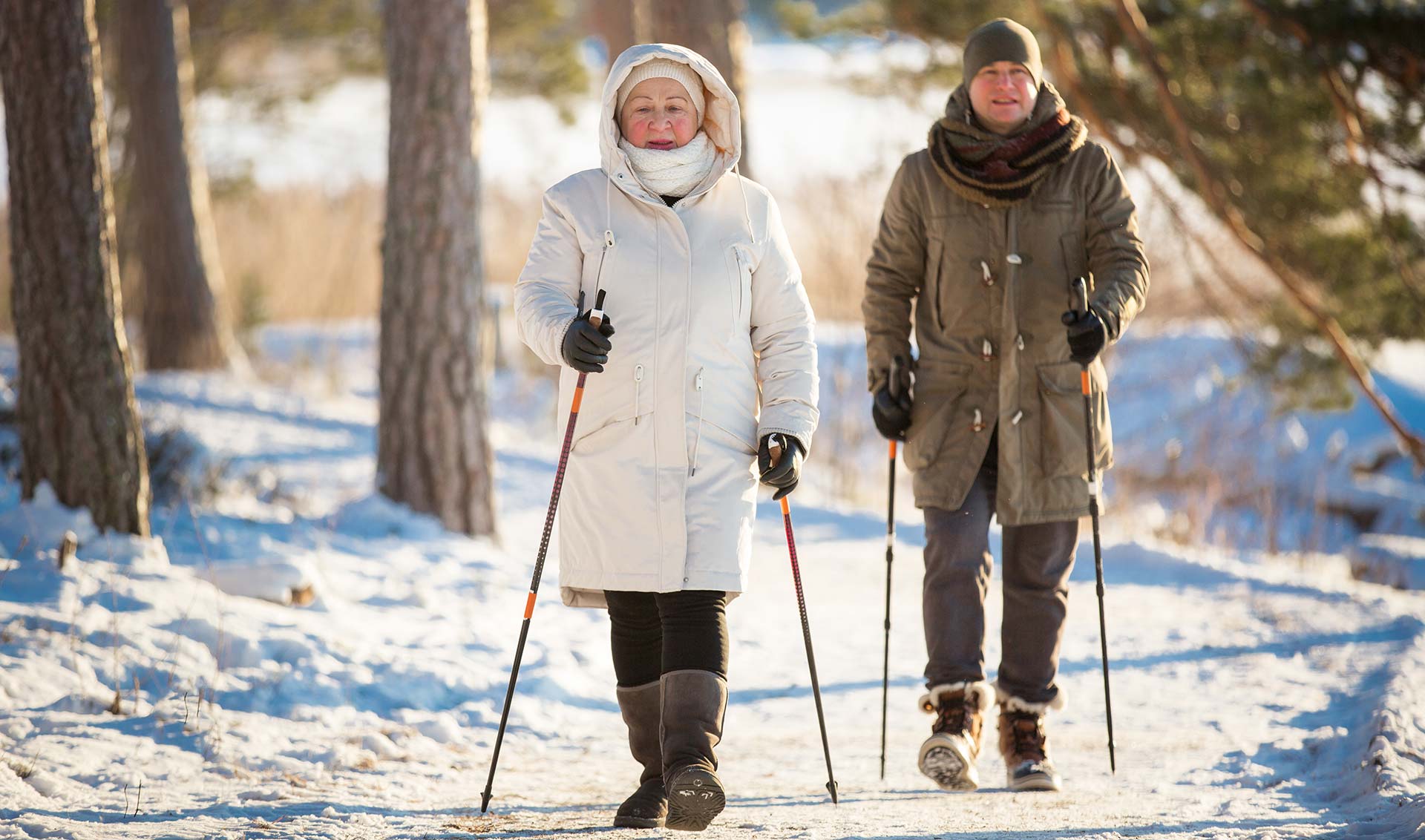The wind blows, whipping up snow. You squint against the cold and ice as you struggle down the sidewalk. OH NO! You didn’t notice that small patch of ice. You slip, you fall. Just another winter day in Alberta. But that slip can be more than embarrassing.
Each year, approximately 152,500 people are hospitalized in Canada due to a fall injury, 8,800 of whom have slipped on ice1. The most affected? Seniors. More than one-third of seniors experience falls, which can have a devastating physical and psychological impact, resulting in disability, chronic pain, loss of independence, reduced quality of life and even death2.
The problem is that cold conditions tend to not slow people down, but make them move faster. That makes us less stable on our feet and more likely to miss that patch of ice. Now, unless you’re Elsa from Disney’s Frozen, you can’t control the ice. But you can take precautions.
You can learn more about preventing falls and staying healthy from Finding Balance, a seniors fall prevention initiative supported by Alberta Blue Cross®.
Follow these safety tips this winter.
- Keep up your fitness routine. Winter falls can happen to anyone, but sticking to a workout schedule can help prevent the worst of them. Keep your balance and muscles strong by keeping active and maintaining a healthy fitness level. Yoga, tai chi and resistance training will all help to improve balance and strength.
- Walk like a penguin. The best way to avoid winter slips and falls is to walk with care. Try doing the penguin walk: take shorter shuffling steps, keep your arms at your sides instead of in your pockets, point your toes out, keep your centre of gravity over your feet, bend slightly and walk flat footed. Always watch where you’re stepping, and go slowly as you focus on your balance.
- Wear proper winter gear. Dress for the weather by wearing a high-quality jacket, hat, scarf, thick socks and boots with slip-resistant soles and good ankle support. Mittens will keep you warmer than gloves, and your layers should be kept a little loose so your body heat has somewhere to go. Finally, don’t forget about your eyes: even in winter, you want to wear sunglasses with an ultraviolet (UV) A/B certified seal.
- Keep sidewalks clear, safely! Before you start removing snow, do a little warmup to get your muscles ready. You should also avoid consuming caffeine or nicotine beforehand as these substances can decrease your heart rate and potentially cause your blood vessels to constrict. If it’s not physically safe or possible for you to remove snow, ask a friend or family member for help or look into a snow removal service
- Use ice melt and sand. Not even your best snow removal efforts can keep ice from forming, so keep driveways and sidewalks safe by sanding and using ice melt. If you’re hit with a snowstorm and don’t have any on hand, cat litter will work as a temporary solution.
- Drive for the conditions. It’s best to avoid non-essential road travel in winter, but if you must drive somewhere, check the weather and road conditions before setting out. Give yourself extra time to reach your destination, and don’t let your gas tank get too low. Instead of accelerating right away, feel out the conditions and drive an appropriate speed. Install winter tires before the first snowfall, and before you go anywhere, clear all the snow off your car (roof included).
- Prepare an emergency kit. Winter storms can leave you stranded, so make sure you have an emergency kit both at home and on the road. For your home emergency kit, include flashlights, extra batteries, food, water, blankets and a battery-operated radio. Your vehicle emergency kit should include all of that plus a candle, matches or lighter, folding shovel, ice scraper, booster cables and roadside flares.
- Wear bright or reflective clothing. A typical winter day in Alberta averages only seven hours of sunlight, so it’s important that you remain visible in the dark. Wear something bright and/or reflective if you’re walking so drivers can see you. If you have a four-legged friend, give them a reflective collar or LED collar light so they can stay safe too.
- Stay safe indoors. Even if you plan to hibernate over the winter, hazards can still exist inside. Make sure you have functioning smoke alarms and carbon monoxide detectors, and never leave fires or candles burning unattended.
- Escape the snow with peace of mind. If you are a snowbird and decide to fly south to skip winter altogether, make sure you have proper travel insurance before you go. Unexpected events can happen on vacation, and without travel coverage, you could face potential financial burdens with high medical bills not covered by provincial health care. Don’t travel outside Alberta without emergency medical insurance for you and your family. Always keep a copy of your health and travel insurance with you and a copy with a trusted emergency contact back home. Be sure to consult your doctor to get recommended vaccines for your trip or if you have any concerns about travelling with a medical condition. Find out which travel insurance plan is right for you.
1https://www.huffingtonpost.ca/2018/07/05/falls-injuries-report_a_23475450/
2https://www.patientsafetyinstitute.ca/en/Topic/Pages/Falls.aspx



Amazing tips for safety in winter, thank you for posting them. How effective are these tips for people outside Alberta?